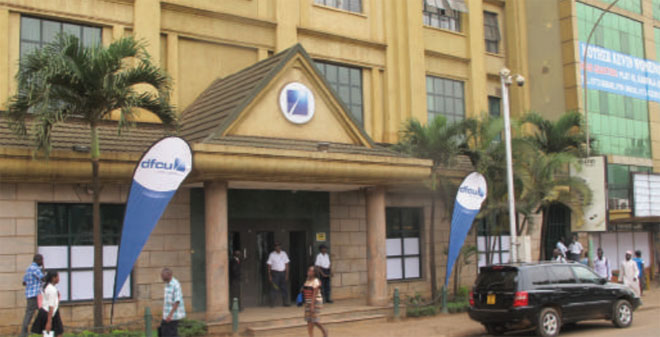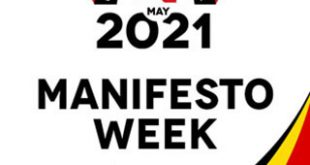
Dfcu’s new take-over will help expand its footprint countrywide
When Bank of Uganda Governor Emmanuel Tumusiime-Mutebile announced that they were transferring liabilities and assets of Crane Bank to the Development Finance Company of Uganda (Dfcu), many wondered how that was possible.
Crane Bank, set up in 1995, has been the fourth largest commercial bank in Uganda while Dfcu has been the distant sixth, out of the country’s 25 commercial banks. The two lenders, however, had an insignificant variance in market share.
Crane Bank controlled 8% market share offering corporate and retail services, with a focus on micro, small and medium-sized businesses while Dfcu had 7.5% market share and focusing on consumer banking, development and institutional financing, and treasury.
But Crane Bank’s trouble started last year when it registered Shs3billion loss in 2015, down from a Shs 50 billion profit in previous year due to high level of Non-Performing Loans and subsequent decline in its core capital to below 50% per legal requirement under the law.
This prompted BoU to take over its management on October 20, 2016 to avoid what it termed as ‘systemic risk to the financial system and allow the lead investor Sudhir Ruparelia, who had 48.67 % shares to either inject in more capital in the financial institution within six months or the regulator looks for a new investor.
And as it became clear that Sudhir, one of the Forbes listed 50 richest men in Africa, could not find a new investor to inject capital into the bank, BoU moved to welcome bidders for the Crane Bank takeover.
The bidding, according to BoU attracted 13 investors including Dfcu, Barclays Africa, First National Bank of South Africa, Aethel Partners, and General Equity, a New Zealand-based fund.
Justine Bagyenda, the executive director supervision at BoU told The Independent in an interview that during the analysis of the bidders, Dfcu emerged as the winner, with the best proposals on how it will contribute towards the banking sector.
“In the process of selecting the acquirer, we looked at the financial status of the prospective acquirer, who is behind this acquirer, is the new acquirer going to put in more capital because Crane Bank was significantly under-capitalized, and whether it had a strong shareholding,” she said.
“Some of the investors informed us that they were not interested in taking over the Crane Bank. They only wanted to take-over management and offer consultant services.”
For that, Bagyenda says only Dfcu met the set criterion for taking over Crane Bank because it had a strong shareholding including Netherland’s Rabobank and Norway’s Norfund, which owns 27.5% each of the lender, UK’s Commonwealth Development Corporation (15%) , and the Uganda’s National Social Security Fund.
“This means that Dfcu is able to rise more capital both locally through the stock exchange and also through its international partners for efficient operation of the bank,” Bagyenda added.
Dfcu management said in a statement that they have begun integrating the assets and liabilities of Crane Bank Limited into its business.
“Further supplemental actions required to give effect to this integration will continue to be implemented by both the Bank and the company including additional equity injection by the company into the bank,” said Dfcu in a statement on Jan. 27.
Dfcu gets boost with Crane bank take-over
Dfcu’s Crane Bank take-over makes it become the second largest commercial bank in the country, with an asset base of Shs3.37trillion, just behind the market leader Stanbic Bank that boasts of Shs3.73trillion. It also boasts on the increase in the branch network from 45 to 66 branches countrywide.
Mutebile said the Crane Bank was transferred to Dfcu following a confirmation from an external auditor that the bank’s liabilities as at October 20, 2016 grossly exceeded its assets and that it was insolvent, which insolvency continued to date.
“BoU on Jan 24, progressed Crane Bank from statutory management to receivership, with BoU as the receiver,” Mutebile said.
“In exercise of its powers as a receiver, under Section 95(1) (b) of the Financial Institutions Act, BoU has now transferred the liabilities (including deposits) of Crane Bank to Dfcu Bank Ltd and in consideration of that transfer of liabilities has conveyed Dfcu, Crane Bank assets.”
This implies that over 500,000 Crane Bank customers and depositors shall now have their accounts operated by Dfcu through its wide branch network, some of which were formally Crane Bank branches.
In addition, Sudhir and his partners in the bank will become a shareholder in Dfcu
Crane Bank take-over becomes the third commercial bank in five years to be taken over by BoU and later sold to new investors for failure to meet the minimum capital requirement that now stands at Shs 25billion. In 2014, BOU revoked the licence of Global Trust Bank Uganda after it failed to become commercially viable, accumulating losses up to Shs 60bn and its assets and liabilities handed to Dfcu Bank.
In 2012, BOU took over the management of the National Bank of Commerce (NBC) and immediately handed it over to Crane Bank citing dire financial constraints.
Crane Bank’s take-over, which also has a branch in Rwanda, comes at the time commercial banks are optimistic that the banking sector will register a surge in profitability on the back of improving economy and a reduction in Non-Performing Loans this year compared with last year. As at the end of 2016, Uganda had 25 commercial banks.
Dfcu listed on the USE on October 14, 2004, registered a 16% drop in profit after tax to Shs35.3 billion in 2015 citing increase in NPL’s compared with the previous year.
****
editor@independent.co.ug
 The Independent Uganda: You get the Truth we Pay the Price
The Independent Uganda: You get the Truth we Pay the Price


